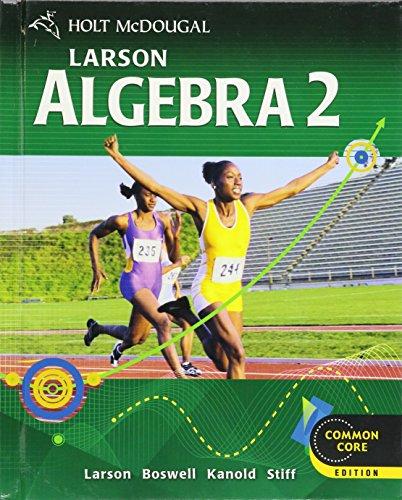Answered step by step
Verified Expert Solution
Question
1 Approved Answer
Chapter 12: 4.) why should you use ANOVA instead of several t tests to evaluate mean differences when an experiment consists of three or more
Chapter 12: 4.) why should you use ANOVA instead of several t tests to evaluate mean differences when an experiment consists of three or more treatment conditions? 6.) An independent-measures research study compares three treatment conditions with a sample of n=10 in each condition. The sample means are M1=2, M2=3, and M3=7. a. Compute SS for the set of 3 treatment means. (Use the three means as a set of n=3 scores and compute SS). B. Using the result from part a, compute n(SS means). Note that this value is equal to SS between. C. Now compute SSbetween with computational formula using the T values. You should obtain the same result a in part b. 12.)A researcher reports an F-ratio with df=3, 36 from an independent-measures research study. a. How many treatment conditions were compared in the study? b. What was the total number of participants in the study? 14.) There is some evidence that high school students justify cheating in class on the basis of poor teacher skills or low levels of teacher caring (Murdock et al.,2004). Students appear to rationalize their illicit behavior based on perceptions of how their teachers view cheating. Poor teachers are thought not to know or care whether students cheat, so cheating in their classes is okay. Good teachers, on the other hand, do care, ands are alert to cheating, so students tend not to cheat in their classes. Following are hypothetical data similar to the actual research result. The scores represent judgements of the acceptability of cheating for the students in each sample. Poor teacher. n=6 M=6 SS=30. Average teacher. n=8 M=2. SS=42 Good Teacher. n=24. M=2. SS=42 N=24 G= 72 X 2 = 393 (SIGMA) a.use ANOVA with =.05 to determine whether there are significant differences in student judgements b. Calculate long n 2 to measure the effect size for this study. C. write a sentence demonstrating how a research report would present the results of the hypothesis test and the measure of effect size. 16.). A pharmaceutical company has developed a drug that is expected to reduce hunger. To test drug, two samples of rats are selected with n=20 in each sample. The rats in the first sample receive the drug every day and those in the second sample are given a placebo. The dependent variable is the amount of food eaten by each rat over a 1-month period. An ANOVA is used to evaluate the difference between the two sample means and the results are reported in the following summary table. ( start with the df column.) Source. SS df. MS ----------------------------------------------------------------------------Between treatments. ___. ___. 20. F=4.00 Within treatments. ___. ____. ___ Total. ___. ____ ----------------------------------------------------------------------------- Chapter 14: 2.) The structure of a two-factor study can be presented as a matrix with the levels of one factor determining the rows and the levels of a second factor determining the columns. With this structure in mind, describe the mean differences that are evaluated by each of the three hypothesis tests that make up a two-factor ANOVA. 4.) For the data in the following matrix: No treatment. Treatment Male M=5. M=3. Overall M=4 Female. M= 9. M=13. Overall M = 11 Overall M=7. Overall M=8 A. B. C. Which two means are compared to describe the treatment main effect? Which two means are compared to describe the gender main effect? Is there an interaction between gender and treatment? Explain your answer 8.) A researcher conducts an independent measures, two factor studies using a separate sample of n=15 participants in each treatment condition. The results are evaluated using an ANOVA and the researcher reports an F-ratio with df= 1,84 for factor A and an F-ratio with df =2,84 for factor B. A. How many levels of factor A were used in this study? B. How many levels of factor B were used in this study? C. What are the df values for the F- ratio evaluating the interaction? 10.) The following results are from an independent-measures, two-factor study with n=5 participants in each treatment condition. Factor B ( Factor A- first row a1. Second a2) - don't know how to make table factor A label on the left side B1. T=25 M=5 SS=30 T = 15 M=8 SS=22 N=40 G=120 X 2=640 B2 T=40 M=8 SS = 38 T=20 M= 4 SS=26 b3 T=70 M=14 SS=46 T=40 M= 3 SS=30 12.) Most sports injuries are immediate and obvious, like a broken leg. However, some can be more subtle , like the neurological damage that may occur when soccer players repeatedly head a soccer ball. To examine long term effects of repeated heading . Downs and Abwender (2002)examined two different age groups of soccer players and swimmers. The dependent variable was performance on a conceptual thinking task. Following are hypothetical data similar to research results. a. use a two factor ANOVA with = .05 to evaluate the main effects and interaction. b. calculate the effects size (n2) for the main effects and the interaction c. briefly describe the outcome of the study Factor B : AGE College n =20 n= 20 M=9 T =180 M=4 SS= 380 Factor A : Sport Older T=80 SS=390 n =20 N=20 M=9 M=8 T=180 T=160 SS=350 SS=400 Soccer Swimming X 2=6360 (these should be located on left side of table)
Step by Step Solution
There are 3 Steps involved in it
Step: 1

Get Instant Access to Expert-Tailored Solutions
See step-by-step solutions with expert insights and AI powered tools for academic success
Step: 2

Step: 3

Ace Your Homework with AI
Get the answers you need in no time with our AI-driven, step-by-step assistance
Get Started


